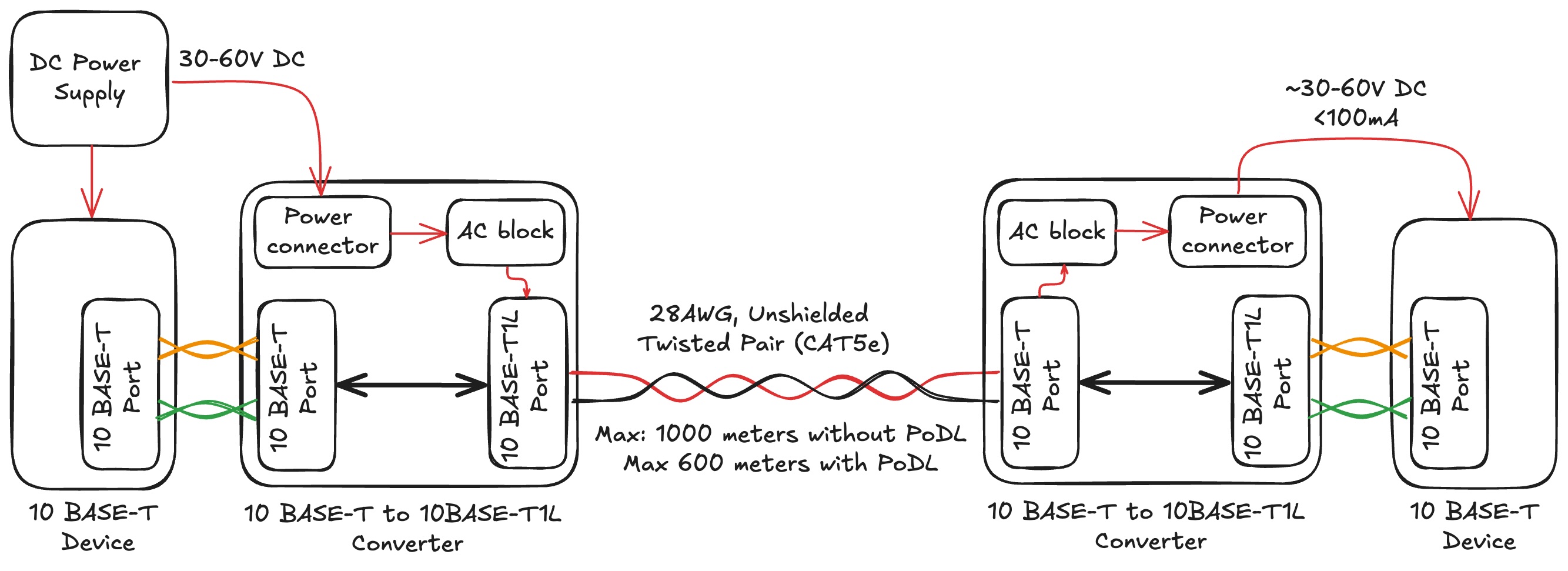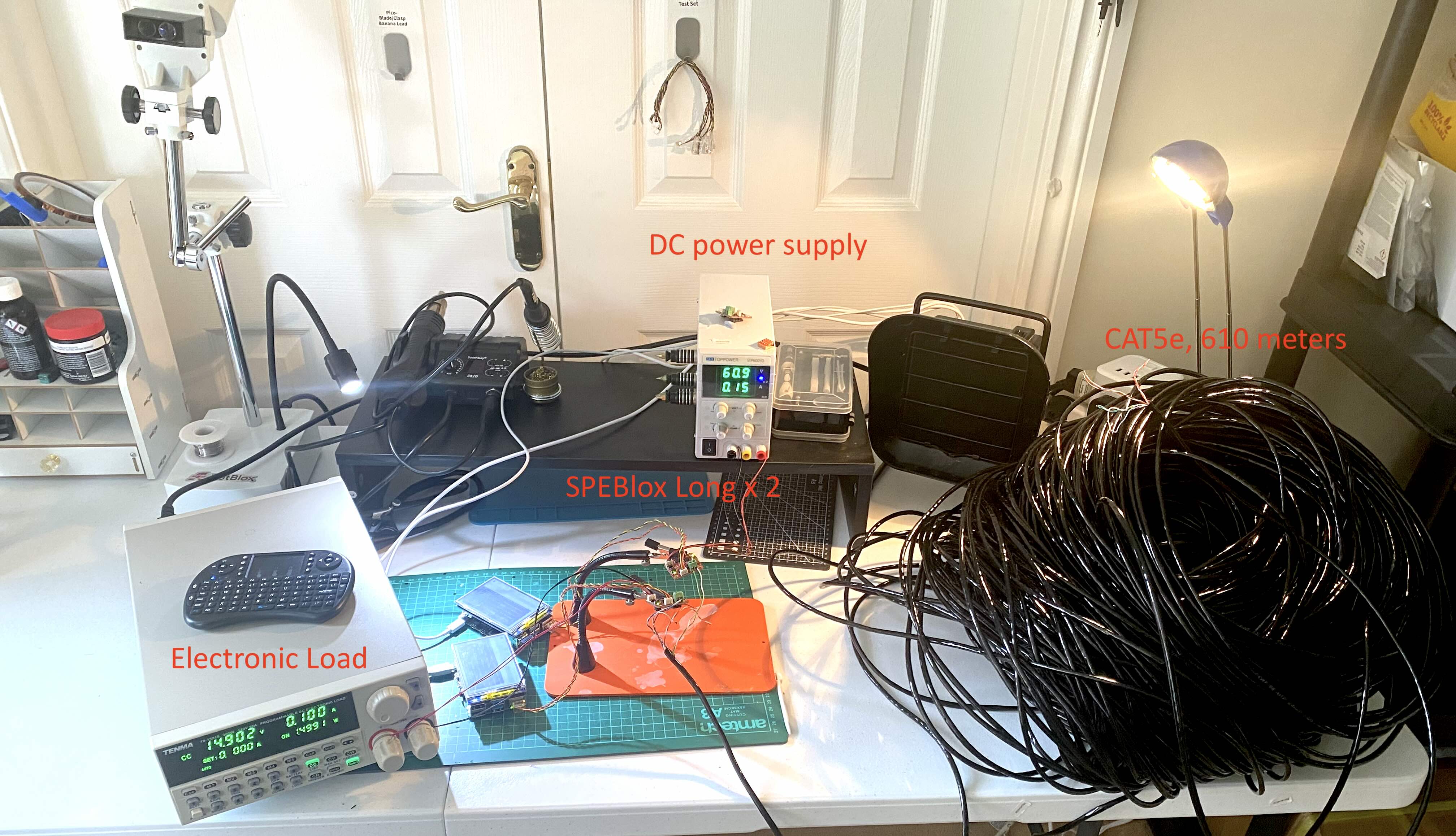Posted by Josh Elijah on 23rd Aug 2024
SPEBlox Long can now be ordered with PoDL enabled
What is SPEBlox Long
SPEBlox Long is a compact, rugged 10BASE-T1L to 10BASE-T converter designed to make it easy to achieve 1000 meters transmission ranges over a single pair of unshielded conductors. It functions as a transparent bridge, or media converter, meaning a standard 10Mbps ethernet device can be connected to a 10BASE-T1L network.

What is Power over Data Line (PoDL)
Up until now, SPEBlox Long has only been able to transmit data over the single pair connection. However, Single Pair Ethernet has a feature called Power over Data Line (PoDL). Similar to Power over Ethernet (PoE), this allows voltage to be injected alongside the data, meaning power and data can be transmitted on the same pair of conductors.
There are a few ways to achieve PoDL (sometimes called SPoE), including some sophisticated auto-negotiation standards as defined in IEEE 802.3cg or 802.3bu. However we decided to simply use a passive injection approach on our boards. The sophisticated auto-negotiation standards are more capable and controllable, but contain some features that aren't necessary just to achieve a power and data link.
Setting up the test for long range PoDL and data
SPEBlox Long has always had the circuitry to achieve PoDL, we simply never populated these components as we were not sure of the effect on range. To test this, we populated these components and setup the following test rig.


The test was set up to simultaneously do an iPerf3 network test between Raspberry Pis, while injecting a voltage at one end, and extracting that same voltage at the other into a DC Electronic Load.
We used a 610 meter CAT5e cable. This means an unshielded twisted pair, 610 meters long.
The results
The table below shows the results.

The Analysis
The results are very informative, and we can draw the following interesting conclusions.
Conclusion 1: There is a minimum voltage for this to work reliably
The test results show that the minimum voltage for this to work is around 25V. Anything below that just resulted in the ethernet ports on the other SPEBlox Long not coming up.
This isn't too surprising; any voltage below 25V is just too low for voltage to be reliably extracted at the other end without dipping below minimum voltage threshold of 5V of SPEBlox Long. One thing to note was that our voltage was a DC measurement, and does not show the AC transients likely occuring. The cause of this is the DC resistance of the cable, and a lower voltage results in a higher current draw, increasing current power losses (P = I²R).
Realistically, if the SPEBlox Long board draws more power (for example, in hotter conditions), we'd expect to see the minimum threshold increase further.
Conclusion 2: The minimum voltage threshold is much higher if you are extracting power at the other end
If you're planning to actually extract power at the other end, you need a much higher voltage, realistically above 60V. This is right up at the maximum threshold of the input voltage circuitry of SPEBlox Long (65V max), so there isn't a lot of wiggle room. We were able to extract 2W (about 0.1A) from the SPEBlox Long at the other end while also maintaining a ~10Mbit/s stream.
Conclusion 3: Powering SPEBlox remotely over PoDL is pretty reliable, powering another device isn't
The general conclusion here is that PoDL works fine if you're just using it to power the remotely connected SPEBlox Long. But extracting any useful power from the remote SPEBlox has to be tested first, and you've got to be sure the remote device is very low power (less than 2W). This is still useful for low power sensors, but don't expect the same kind of 90W power levels as achieved with PoE.
Ordering SPEBlox Long with PoDL enabled
Will will offer SPEBlox Long with the PoDL circuitry enabled as a purchasable product, please get in touch with us for a quote.

